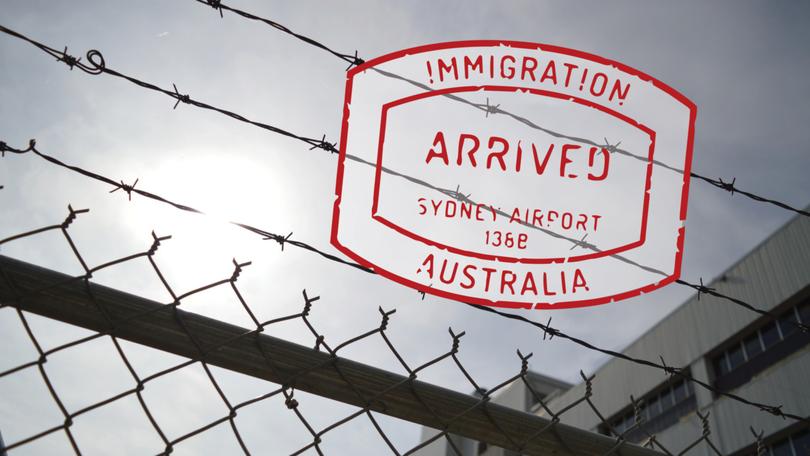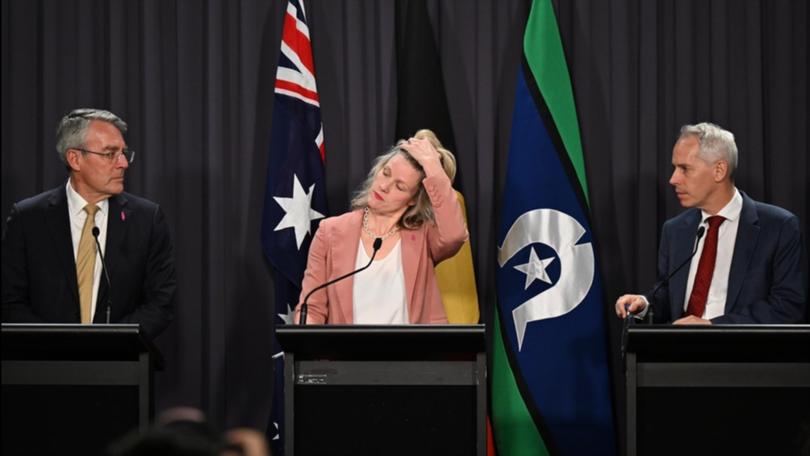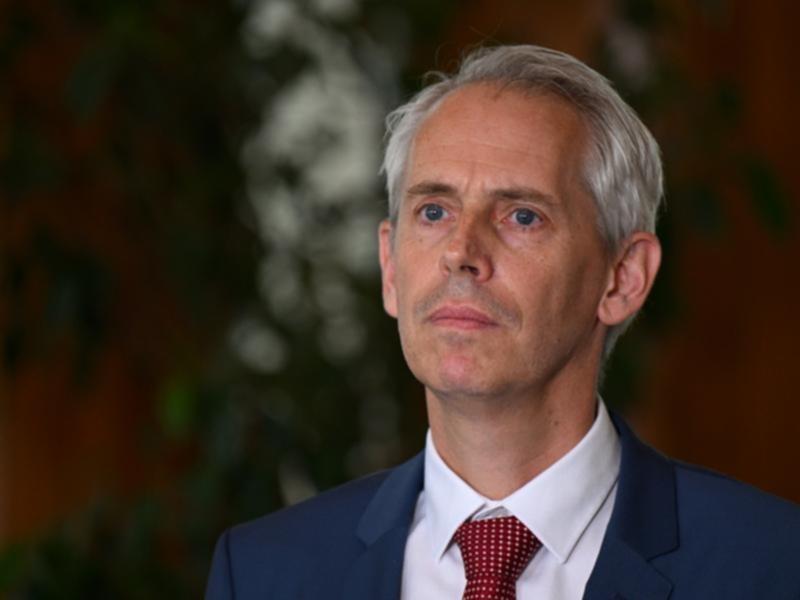Home Affairs Department reveals convictions of former immigration detainees in Senate estimates

Almost half the people released from immigration detention after a bombshell High Court decision last year had had their visas cancelled after convictions for violent assault, kidnapping or armed robbery, fresh documents show.
It has also been revealed the Government has yet to lodge a single application to re-detain the worst offenders – more than two months after passing emergency laws handing it the power to do so.
“This is a shocking failure on community safety and national security from the Albanese Government,” shadow home affairs minister James Paterson said.
Sign up to The Nightly's newsletters.
Get the first look at the digital newspaper, curated daily stories and breaking headlines delivered to your inbox.
By continuing you agree to our Terms and Privacy Policy.The immigration detention saga that dominated the final weeks of Federal Parliament last year erupted again on Monday as Home Affairs officials fronted up to Senate estimates.
So far, 149 people have been released from immigration detention as a result of the High Court’s November ruling.

Since their release, six people have been arrested for breaching strict visa conditions and another 18 have been charged with breaking State and Territory laws, Home Affairs documents tabled in Senate estimates on Monday show.
The documents revealed for the first time that 72 of the former detainees had been convicted of violent crimes.
Another 37 had convictions for sexual offences including against children, 16 for domestic violence and stalking, 13 for serious drug offences and seven for murder.
The other four were split between having no convictions or having been found guilty of people smuggling or international crimes, but the department did not provide the breakdown so as not to identify individuals.
While many of the worst offenders were released from WA’s Yongah Hill immigration detention centre, by the end of January, just 20 former detainees remained in the State.
The High Court ruled in early November that a man known as NZYQ could not be kept in indefinite immigration detention because there was no prospect of ever deporting him.
The decision was handed down initially without reasons, which hamstrung the Government’s response.
But it released 79 people from immigration detention — about half the total cohort eventually released — within four days of the decision.
Parliament passed two sets of emergency laws to impose tough visa conditions on these people, including electronic monitoring and curfews.
The Home Affairs data released on Monday shows 113 of the 149 people are required to wear ankle bracelets.
The Opposition used question time to pressure Immigration Minister Andrew Giles to confirm if any of the 36 ex-detainees not required to wear an ankle monitor had previously committed an offence.

Mr Giles would not directly answer the question but repeated that the Government was acting on the advice of a special law enforcement board it set up to manage the cohort.
In total, 103 people have all four “prescribed conditions” on their bridging visas, meaning they have a curfew, are electronically tracked and must notify the department of significant changes to their banking and financial circumstances.
Another 30 have none of these conditions applied and the rest have a mix.
None had been re-detained on the basis that they might be able to be deported.
The second tranche of legislation established a continuing detention or surveillance orders scheme, similar to that already in place for people convicted of terrorism offences.
However, the Government has yet to make any applications to a court for such orders.
“What was the point of rushing that legislation through before Christmas if the government planned to wait two months before even using it?” Senator Paterson said.
Mr Giles defended the delay, pointing out it took the former Coalition government more than three years to prepare the first application under the terrorist offender regime.
Quoting Senator Paterson, Mr Giles said the Government would need to meet a “high legal threshold” to convince the court to re-detain one of the offenders.
“This is exactly why we need to treat this with caution and determined application it deserves,” he said.
The departmental document also sets out the timeline of when ministers were informed about progress in the legal case.
It shows that on May 31, when the case was filed in the High Court, both sides agreed there was no prospect of the man at the centre being deported.
However, the department said, “the minister was not asked to sign off on the statement of agreed facts”.
Officials discussed legal advice on the prospects of winning the case with Immigration Minister Andrew Giles in early August and with Home Affairs Minister Clare O’Neil towards the end of the month.
There was near-daily contact between the department and ministers throughout October, in the lead-up to the court hearing.
On November 3, four days before the hearing started, the department sent Ms O’Neil and Mr Giles an “operational plan in the event of a loss”.
Initial drafting instructions for the emergency legislation were issued on November 10, two days after the court’s ruling.
Home Affairs secretary Stephanie Foster told senators on Monday the department had “rapidly and expertly” put in place legislative and operations responses to the High Court’s decision.
“Ensuring community safety was, and remains, our overarching priority, in this response,” she said.
Originally published as Home Affairs Department reveals convictions of former immigration detainees in Senate estimates

